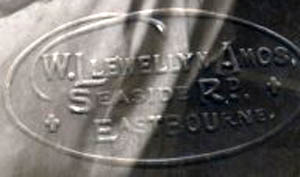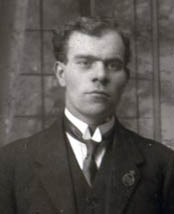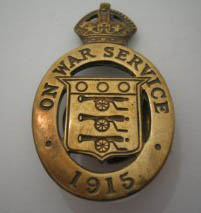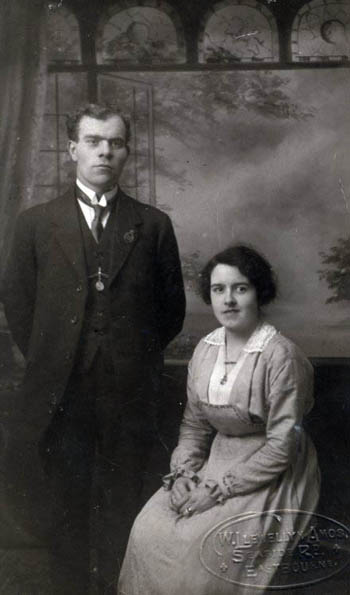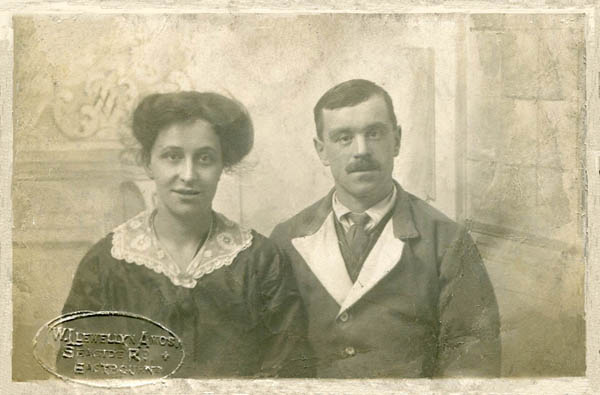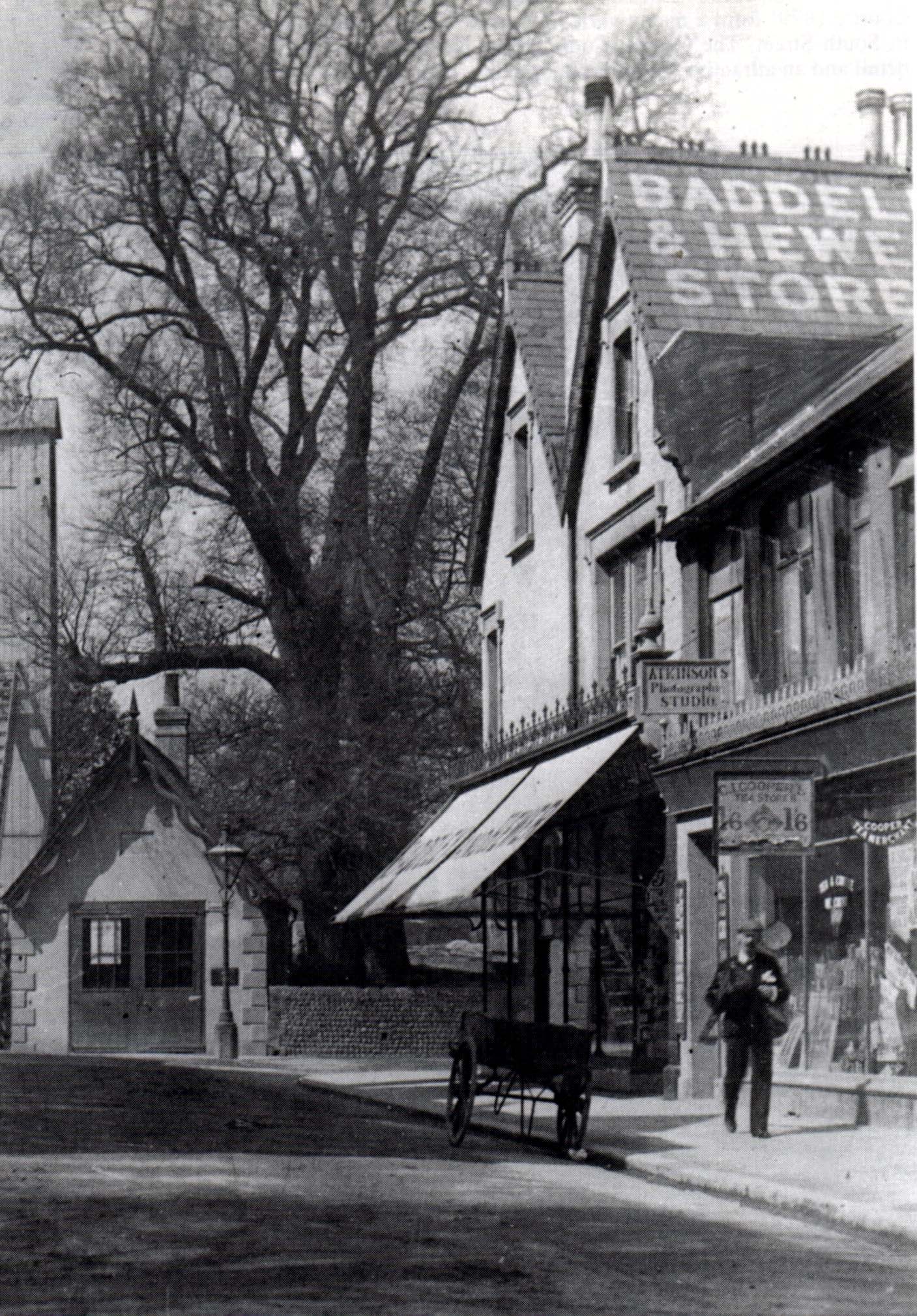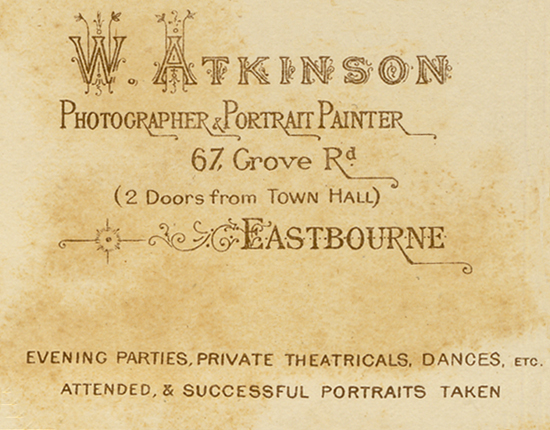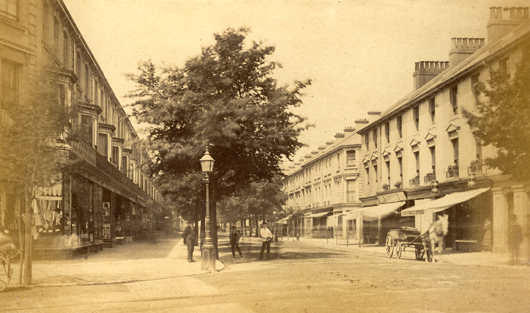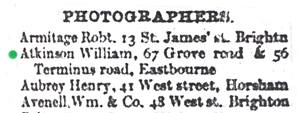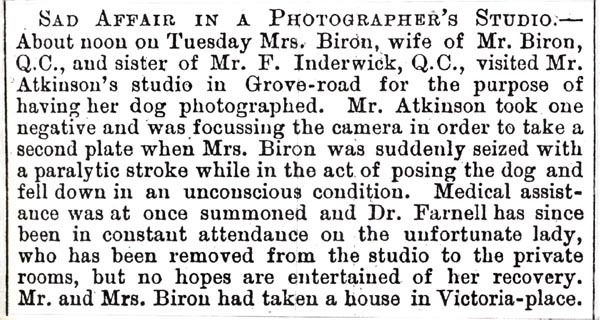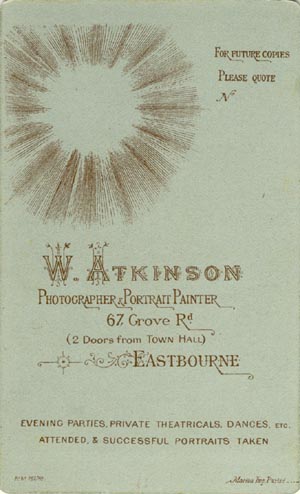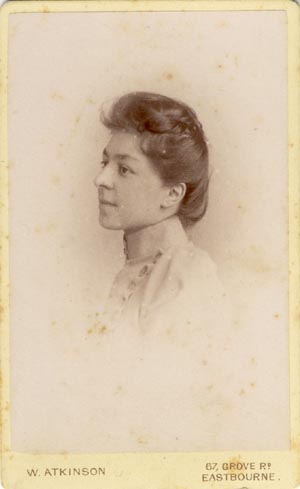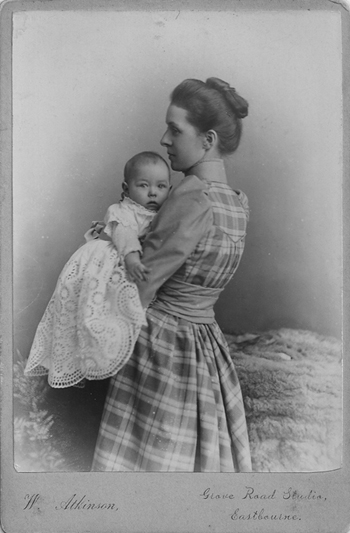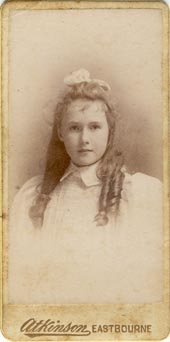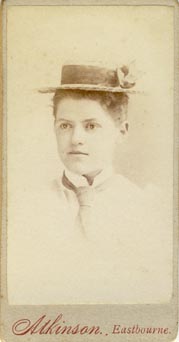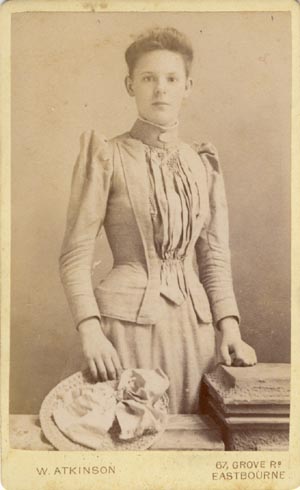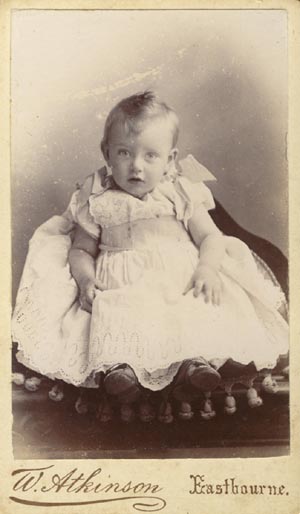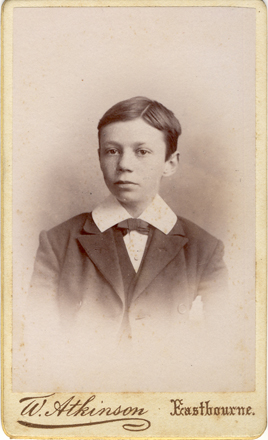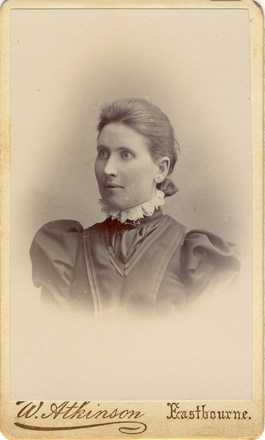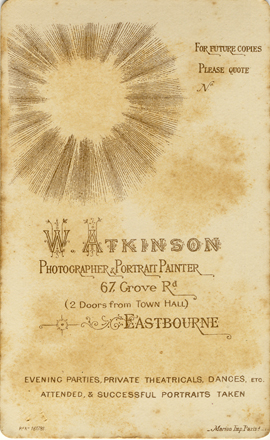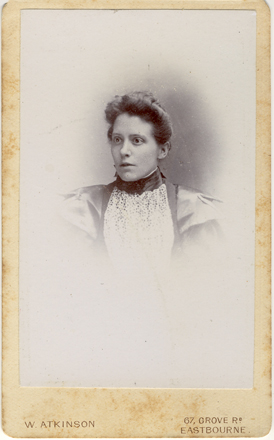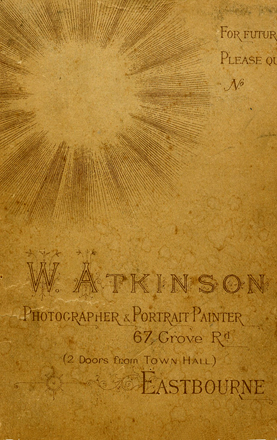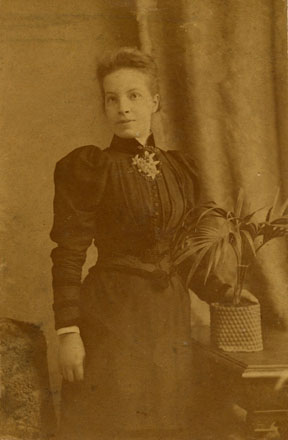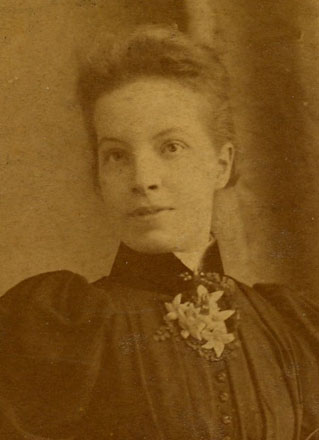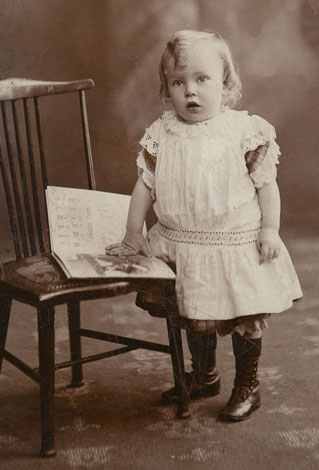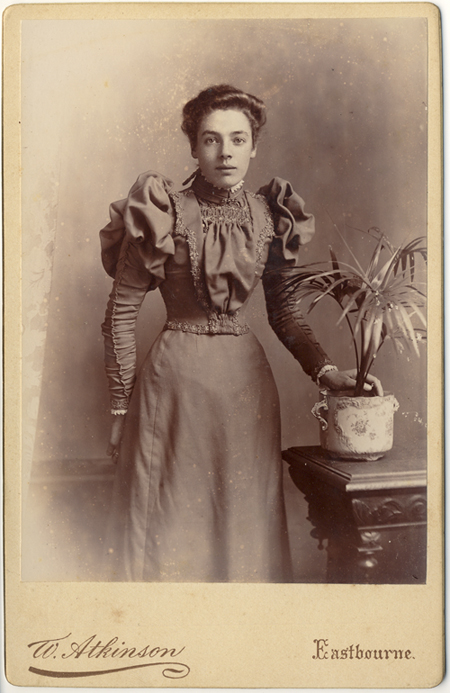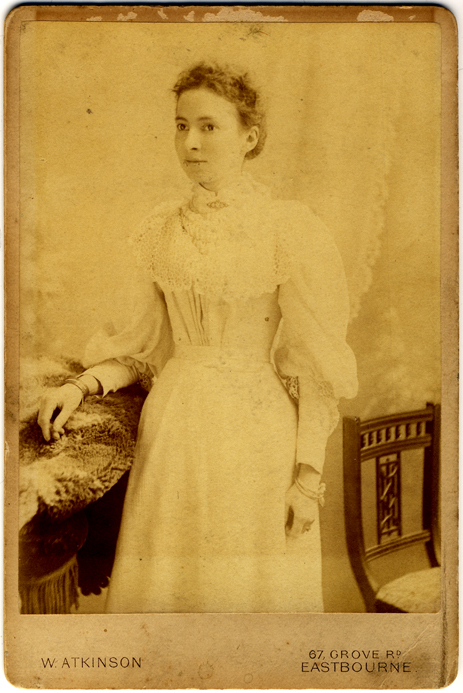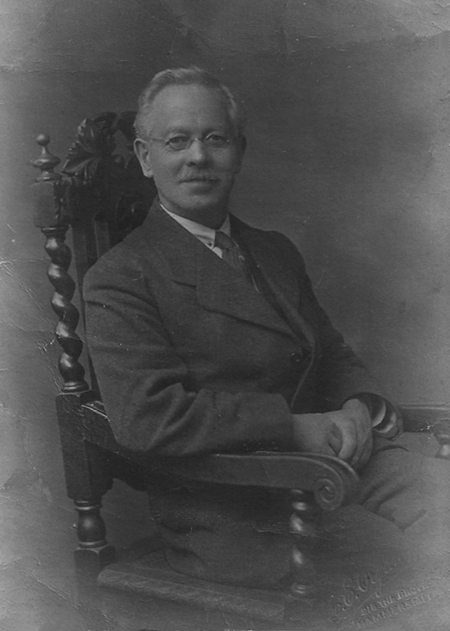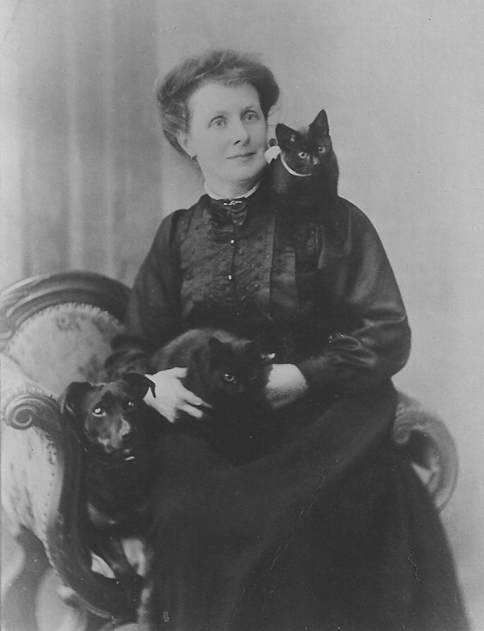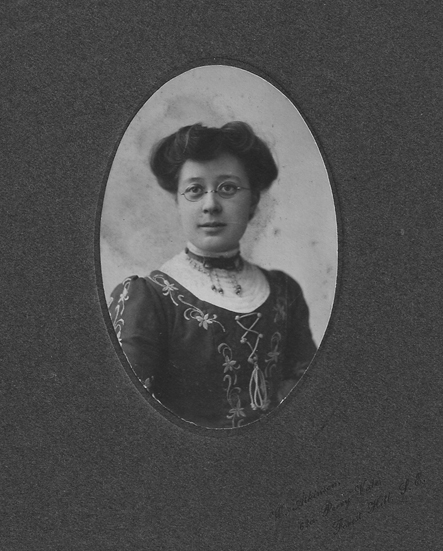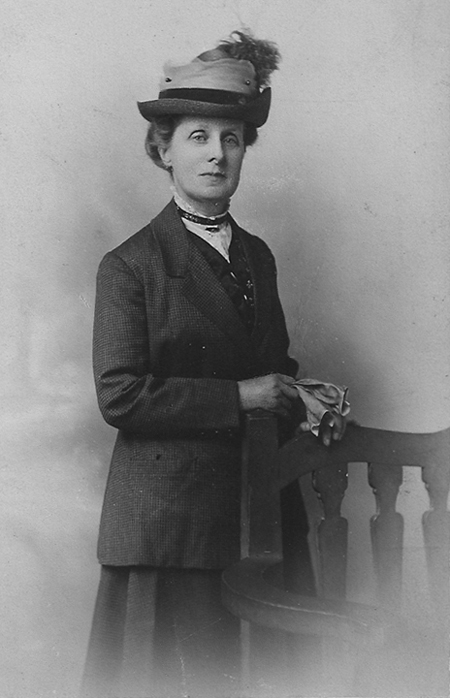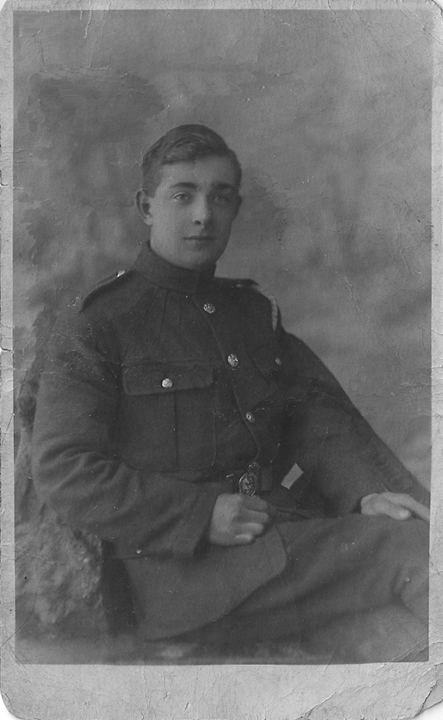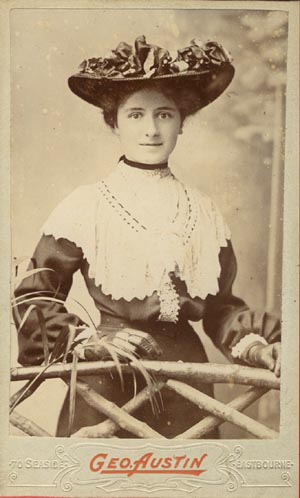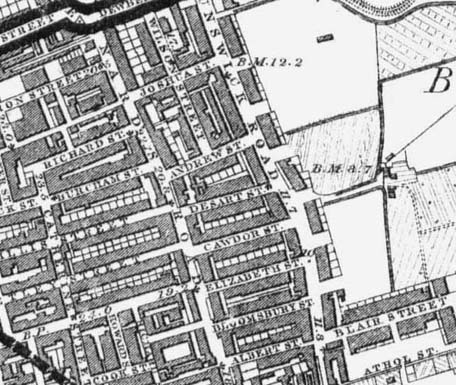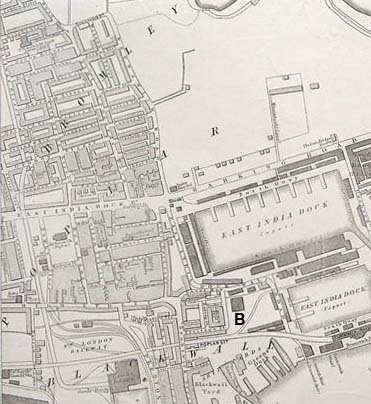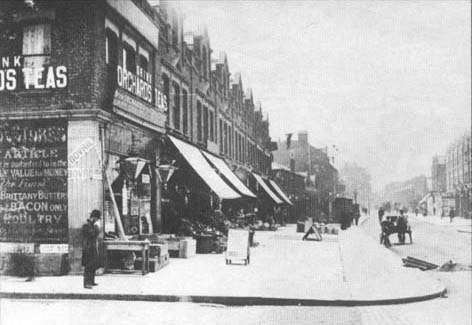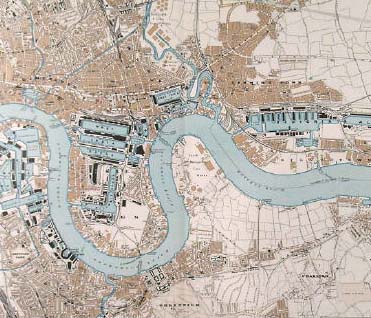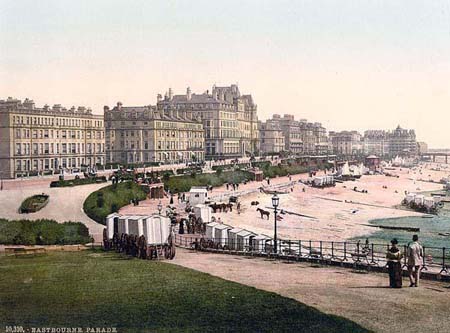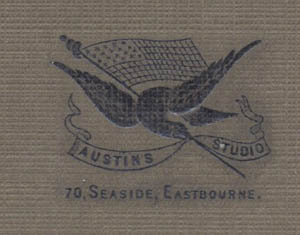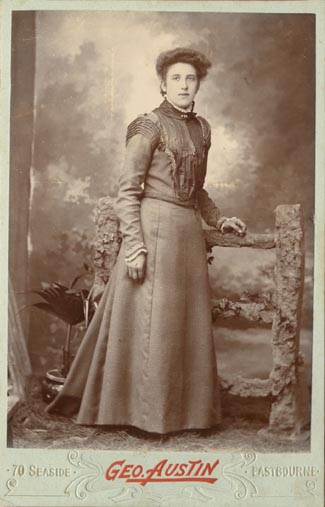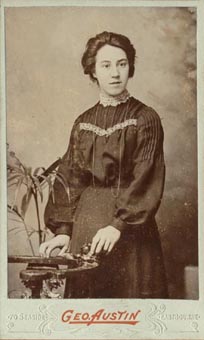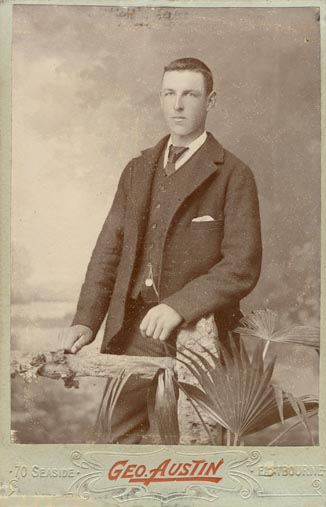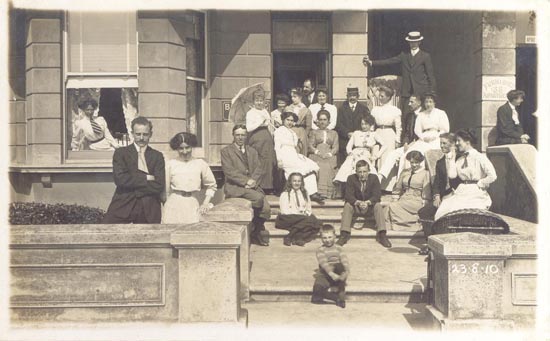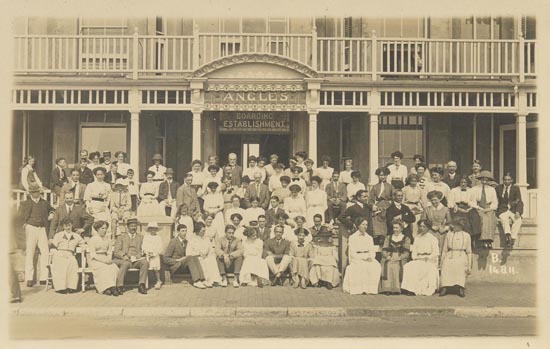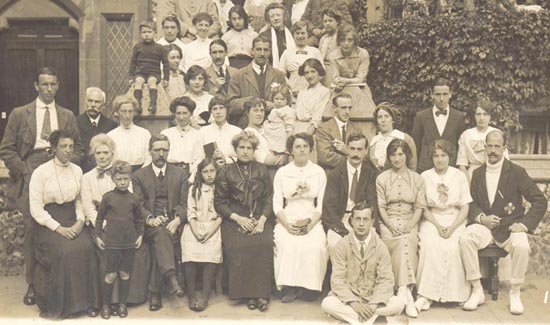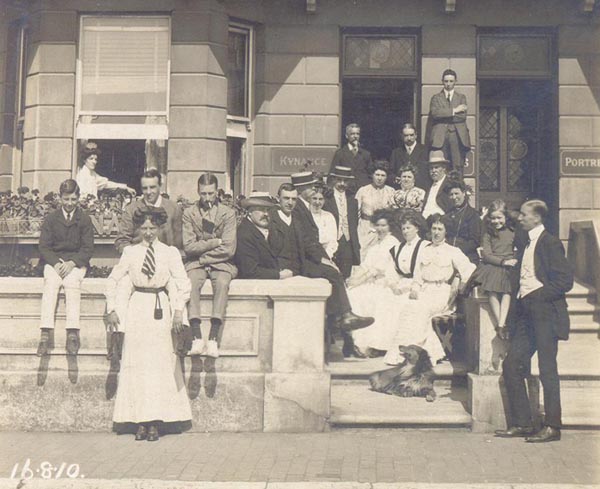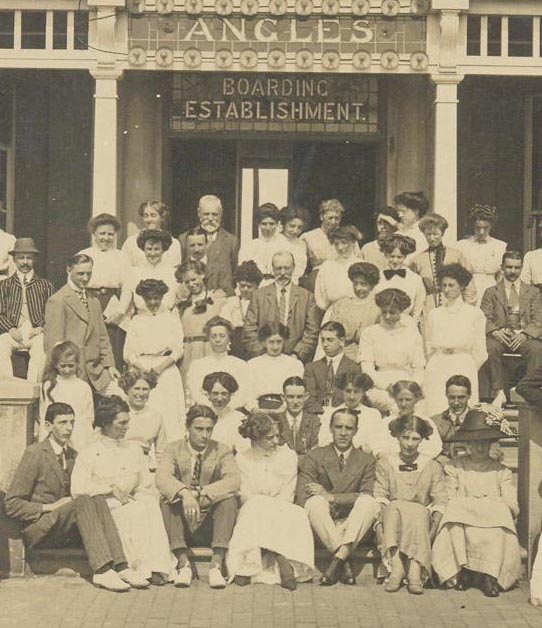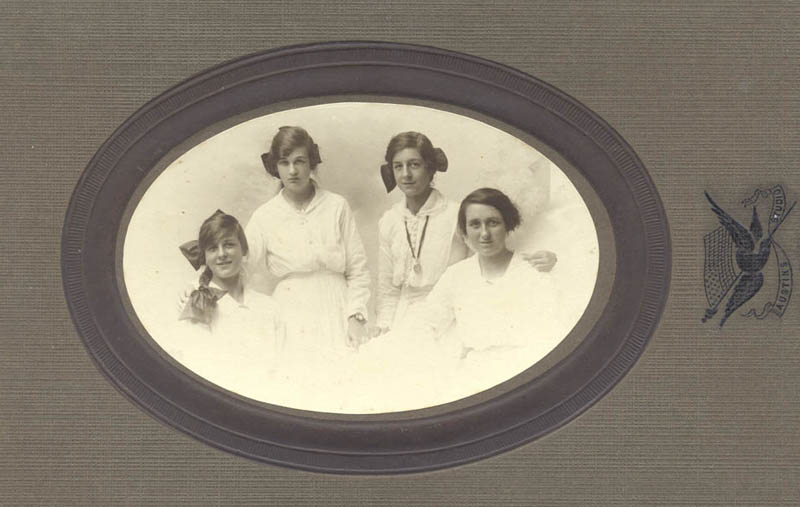|
 |
|
[ABOVE] A portrait of William Atkinson taken at George Organ's photographic
portrait studio at 215 The Grove, Hammersmith.
(c1903). Between 1905 and 1907, George Edward Organ (born
1872, Gloucester) was operating two photographic studios in the London
area - one at 215 The Grove, Goldhawk Road, Hammersmith, the other at 62
Perry Vale, Forest Hill, Lewisham. It seems likely that William
Atkinson managed G. E. Organ's branch studio at 62 Perry Vale,
Lewisham, up until around 1908, when he took over the Perry Vale
studio from his employer. |
|
[PHOTO: Courtesy of Pat Parent] |
| |
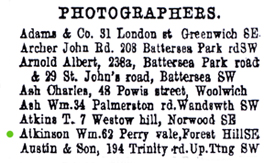 |
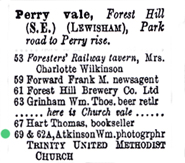 |
|
[ABOVE] William Atkinson listed as a photographer at 62
Perry Vale, Forest Hill, London S.E. in the Trades Section
of The Post Office London Directory for 1911.
William Atkinson was recorded as a photographer at 62 Perry
Vale until 1917. |
[ABOVE] William Atkinson listed as a photographer at 69
& 62A Perry Vale, Forest Hill, Lewisham London S.E. in Kelly's
London Suburbs Street Directory (1914). |
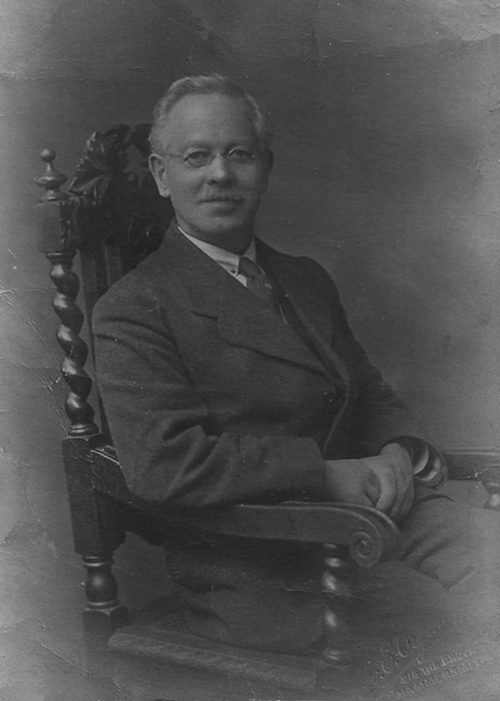
[ABOVE] A later portrait of William Atkinson taken at George Organ's photographic
portrait studio at 215 The Grove, Hammersmith.
(c1918). The fact that William Atkinson and members of his family
continued to have their portraits taken at George Organ's studio at 215 The Grove, Hammersmith
after Atkinson closed his studio in Perry Vale, Lewisham, around 1918
suggests that the two photographers were still closely associated after
the end of the First World War. George Edward Organ (born
1872, Gloucester) remained in charge of the studio at 215 The Grove, Hammersmith
until 1935. In 1926, George Edward Organ brought his son
Richard Spring Organ (born 1908, Hammersmith) into the business and
his studio in Hammersmith went under the name of "G. E. Organ &
Son" until 1932.
[PHOTO: Courtesy of Pat Parent] |
William Atkinson was born in Liverpool
around
1858. In his early twenties, William Atkinson was earning a living by
painting portraits. When the 1881 census was taken, both William
Atkinson and his brother George Atkinson (born c1856, Liverpool) were
recorded on the census return as portrait painters. In 1881, William
Atkinson was boarding, alongside his brother George, at the home of Mrs
Sarah Armstrong, a farmer's widow who lived at 10 London Road Terrace, Botchergate,
Carlisle, Cumberland.
William Atkinson is described on the census
return as a "Portrait Painter", aged 22.
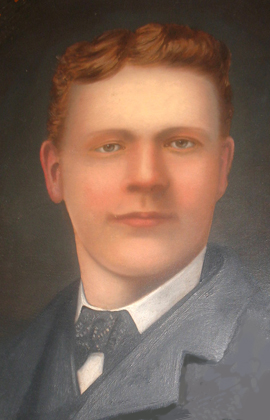 |
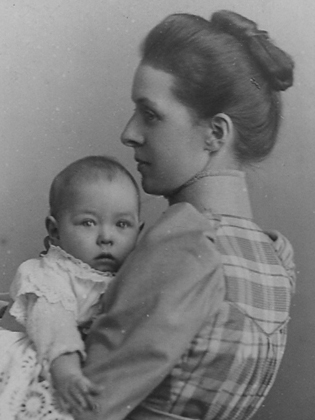 |
|
[ABOVE] A self portrait by William Atkinson, painted in the early
1880s when he was working as a portrait painter in Cumberland. The
1881 census records twenty-two year old William Atkinson as a
portrait painter lodging at a house in the Botchergate district of
Carlisle. |
[ABOVE] William Atkinson's wife Sarah Jane Atkinson holding her
baby son George Leslie Atkinson. Mrs Atkinson and her baby
were photographed at her husband's portrait studio at 67 Grove Road,
Eastbourne, towards the end of 1897. |
|
[PICTURE: Courtesy of George &
Jean Atkinson] |
[PHOTO: Courtesy of Pat Parent] |
William Atkinson appears to have
worked as an itinerant artist, travelling around the north of England
painting portraits. From the Botchergate district of Carlisle, William
Atkinson journeyed south towards the Lake District. At Haverthwaite, a
village a few miles south of Lake Windermere, William Atkinson met
Sarah Jane Bannister (born 1858, Sawtry, Huntingdonshire), a young
domestic servant who was working as a nursemaid in the home Ann and
Richard Heighway Kirby, the vicar of Haverthwaite. In 1884, William
Atkinson and Sarah Jane Bannister travelled to Sarah's home village of Sawtry in Huntingdonshire, where the couple were married. [The marriage
of William Atkinson and Sarah Jane Bannister was registered in the
district of Huntingdon during the 2nd Quarter of 1884]. After their
wedding in Huntingdonshire, William and Sarah Atkinson returned to Haverthwaite, where their first child Edith Mary Atkinson was
born towards the end of 1885. [The birth of Edith Mary Atkinson
was registered in the Cumbria / Lancashire district of Ulverston during the 4th Quarter of
1885]. A second child, a son named Charles Atkinson, was born in
Ulverston, Lancashire (now Ulverston, Cumbria) the
following year.
After the birth of his first two
children, William Atkinson resumed his itinerant lifestyle. By 1890,
William Atkinson and his family had reached Yorkshire, where their third
child Hilda May Atkinson was born. [The birth of Hilda May
Atkinson was registered in the district of Huddersfield during the 2nd
Quarter of 1890].
|
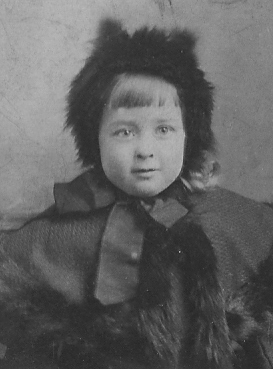 |
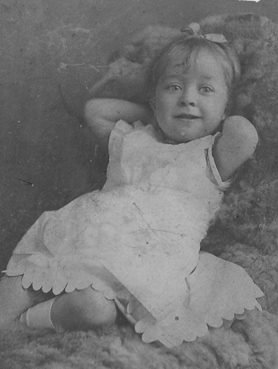 |
|
[ABOVE] A portrait of Hilda May Atkinson (born 1890, Ulverston),
photographed by her father, William Atkinson, at his Eastbourne
studio around 1894. |
[ABOVE] A portrait of Hilda May Atkinson (born 1890, Ulverston),
photographed at William Atkinson's studio at 67 Grove Road,
Eastbourne, around 1894. |
William Atkinson - Portrait
Photographer in Eastbourne
By 1891, William Atkinson had
settled in the Sussex seaside resort of Eastbourne, where he
established himself as a portrait photographer. The 1891 census records
William Atkinson as a thirty-two year old "Photographer" residing
at a villa in Ocklynge Road, Eastbourne, with his wife,
Sarah, and their three children - Edith (aged 5), Charles
(aged 5) and Hilda (11 months). Initially, William Atkinson
was employed by an established Eastbourne photographer (possibly by
John Berryman of The Palace Studio, Eastbourne) but by 1894 he was
running his own portrait studios in Eastbourne. William Atkinson
operated two photographic studios in Eastbourne, one at 67 Grove
Road, near the Town Hall and close to Eastbourne's Fire Station, and
another at 56 Terminus Road, not far from Eastbourne's Railway
Station. William Atkinson's studio at 56 Terminus Road, Eastbourne, known
as the Palace Studio, closed around 1896, but he
operated the studio at 67 Grove Road, Eastbourne until about
1899.
In 1897, William and Sarah Atkinson's
fourth child, a son named George Leslie Atkinson, was born in
Eastbourne. [The birth of George Leslie Atkinson was registered in
Eastbourne during 3rd Quarter of 1897]. Around 1899, William Atkinson
sold his photographic studio at 67 Grove Road, Eastbourne
to two brothers Clement John Cordrey and Walter Sydney Cordrey.
William Atkinson career as a
Professional Photographer after 1900
William Atkinson and his family
eventually moved to
Walthamstow in Essex, where William continued his career as a
photographer. William Atkinson is recorded as a "Photographer", aged 42,
in the 1901 census of Walthamstow. It appears that, around 1903, William Atkinson
was employed as a photographer at a West London studio owned by a
photographic artist named George Edward Organ (born 1872,
Gloucester). In 1898, George Organ had taken over Douglas
Fitzpatrick Windsor's photographic portrait studio at 215 The Grove,
Goldhawk Road, Hammersmith. By 1905, George Organ was
operating two photographic studios in the London area - one at 215
The Grove, Hammersmith, the other at 62 Perry Vale, Forest Hill,
Lewisham. Evidence suggests that William Atkinson managed G.
E. Organ's Perry Vale studio up until 1908, when he took over the
studio from his employer. In 1911, William Atkinson is listed in
Kelly's London County Suburbs Directory as the proprietor
of G. E. Organ's former photographic studio at 62 Perry Vale, Forest
Hill, Lewisham. When the
census was taken on 2nd April 1911, William Atkinson, who is described on
the census return as a 52 year old
"Photographer", was residing at 99 Perry Vale, Forest Hill, London S.E., with
his wife Sarah Jane and two of their children - twenty year old Hilda May and
George Leslie Atkinson, at that time a 13 year old school boy. The
Street Directory section of in
Kelly's Post Office London County Suburbs Directory, published in 1914, records
William Atkinson as a "Photographer" at 69 & 62A Perry Vale, Forest Hill,
Lewisham. The
1916 and 1917 editions of the Post Office London Suburbs Directory lists
William Atkinson as a
"Photographer" solely at 62 Perry Vale, Forest Hill. It appears
that William Atkinson's Perry
Vale studio had closed by 1918.
William Atkinson and his wife
Sarah Jane Atkinson retired to Great Paxton, a village near
St Neots in Huntingdonshire. William Atkinson died in
Great Paxton on 20th July 1927, at the age of 69. His widow, Mrs
Sarah Jane Atkinson died in the Huntingdonshire district of St
Neots during the 3rd Quarter of 1941 at the age of 83.
|

